Generalities
Mendeleiev classification elements is from a genious russian chemist at the begining of the 19th century. He have the idea to organize all the known elements in a table (with rows and columns) according to their atomic number, i.e. their number of protons.The first one is hydrogen, the second helium, the third lithium, etc. Making is table, Mendeleiev geniously organize rows and columns to project futurs elements, unknows at his time.
The table (in its simplified version, without the two lasts lines of very very rares elements) look like to this on paper:
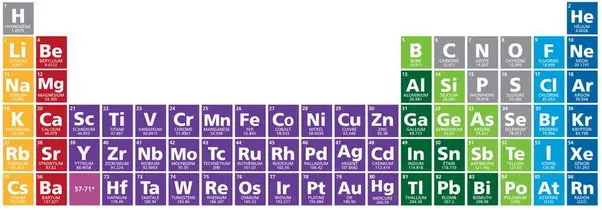
Elements are from hydrogen (1) to radon (86), there is 71 ones but they are nor regularly cressant: from hydrogen (1) to Lanthane (57), then from hafnium (72) to radon (86). If you want to know more about history of elements, see this page.
The goal was so to make 3D table, then put information and furnish each boxes with some of the elment.
How to ?
The table
We had to choose in which material it should be made, and the size of the inside boxes. For the material, not too difficult: wood, easy to work, beautiful material, and my father is an expert in wood work. So his task was to make a 6 rows by 18 columns table of 7x7 cm or 2.8x2.8 inches boxes. Here is its work:
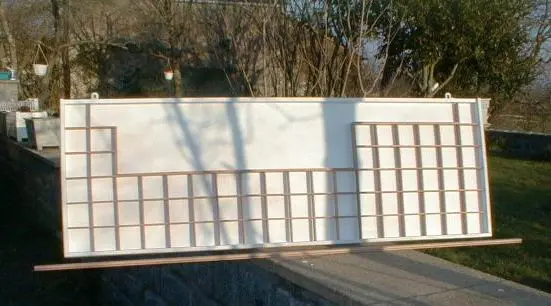
Please note the high quality of the job (my father is a real artist): he also add fixation sytem on top, and a place to insert a window on front to protect the boxes.
The 7x7 cm or 2.8x2.8 inches for boxes seems to be a good compromize, there is enough place for writing name of the element and add a small glass pipe with element in. The total size of table is 135x46 cm or 53x18 inches.
Elements list
To easily add element name and informations, I use printer labels of 63.5 x 33.9 millimeters.
The information on the label is: name (of course), atomic number and a brief description of the origin of the name.
You can download a file with all those informations:
- Text only (fields separate by tabulations)
- Classical HTML
- Excel 2000
- Access 2000 with a report/query who automatically print labels.
Making
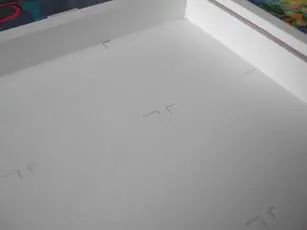
First step, 2 layers of white paint, then using the inside shape to mark labels places with a small line in each up left and right corners, made with lead pencil.
Trick: don't do mark boxes against right and left sides, otherwise it's gonna be difficult to erase the lines.
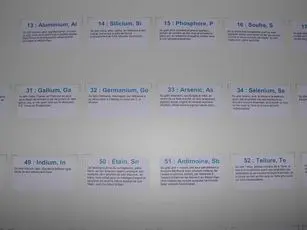
Remove the inside shape and stick labels, then erase drawed lines.
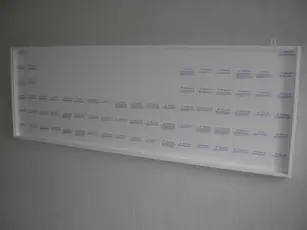
Table is now ready to receive elements.
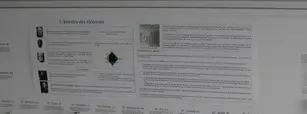
In the center of the table I put some informations about history of elements classifications.
And finally: hunting for elements
It's easy for very familiar elements like copper, carbon or iron you can find them everywhere, but for others it's a bit more difficult, and also more interesting, you should make some researches, ask friends, chemistry teachers, etc. The goal is that:- There is really some atoms (at least) of the element in the choosen object
- The object is a bit symbolic of the element kind (metal, gas,...)
- There is no doubloon (for example salt = sodium chlorine, used for sodium AND chlorine)
- There is no danger with the object (no pure sodium or fluorine for example)
Well it was not always easy, and sometimes some choices have been made. We could sort objects in two categories: it's sure, there is in (iron, sulphur, oxygen, ...), and there is probably in (rhodium, palladium, hafnium)
To stick them, I use hot glue which could be removed in case of error.
To put them, Nanou give me some commercial chemistry small pipes, sometimes re-cut at the right size.
Overview

You can click on this photo to get details on the choosen objects, and if you want more informations or precision, don't hesitate to contact me.
Some links about this
Adviced by Christophe, Theodore Gray website, another periodoc table fan who make and sell them.
Many thanks...
To all of those who help me, especially in elements hunting, and that are not quoted before: Claude Calvarin from University of Brest, Sophie Prou, Jean Sala Pala and Sylvie Houille from chemistry department, Maurice L'Her from UMR CNRS 6521 laboratory, Frédéric Salach and Gianni Porcellini.






The 1 comment already posted on this page